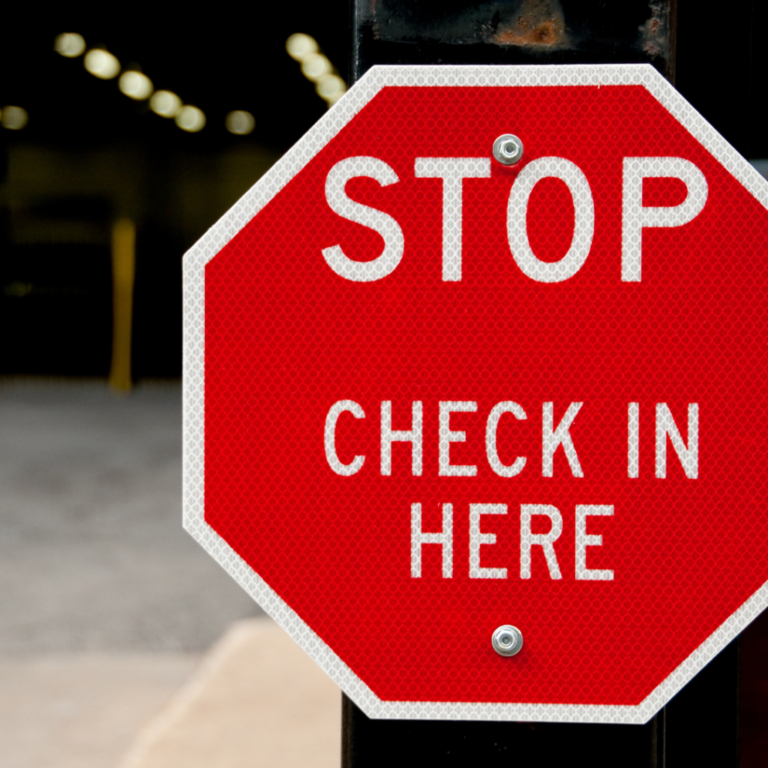Arriving at many different places, we must announce our presence in order to move forward with the activity — we check-in to a doctor’s office or a hotel, we check with the Maitre-D at a restaurant before we are seated, we often check in with our partner’s about the evening’s events, or our colleagues and co-workers about projects and expectation around work. Check-ins are already woven throughout our regular experience.
This is not quite the check-in I’m meaning for today. When a coach and a client check in, it is an invitation to reflect on the work they are doing together. A check-in can be informal, “Hey, is everything ok?” or more to the point, “Are we on track? What work do we need to do next? What is challenging for you? How can I best support this situation and you?” Ultimately, this sort of check-in is beneficial to both the client and the coach. It is a feedback mechanism that allows both parties to evaluate the direction of the conversation and ensure they are headed the right way.

A check-in is an opportunity to create space for the client to answer three questions, known as the SET framework:
Sensation – this is about exploring how the client is feeling and connecting to body sensations and to become aware of new signals.
Emotions – this is about how the client feels, and what emotions are present.
Thoughts – this is what is going on in the client’s head: inner voices, good or bad, needs, wants, etc.
Checking in is how we inform what next to address in the conversation, as we move toward goals and aspirations. It is almost like using a compass to navigate through your path, when you come to a crossroads, you want to know which direction to head — a check-in will let you decide which destination is the right one for you right now.
When you use this tool, the idea is to start with broad questions, and then move through to more specifics — asking follow-up questions for clarification. The more information and description of where the client is right now, the better a map can be drown between coach and client for next steps.

It’s important here to make sure we’re functioning on a system with output AND input, because the other side of a check-in is listening. A coach will engage in active listening in order to let the client know they are being heard. Life is a continual dance, and this is just one step. Active listening gives a chance for the coach to repeat back to the client what was heard, and allow for any adjustments in understanding and interpretation.
This process infuses and informs the movement of the coaching experience. Without knowing where we are, we cannot get to where we need to go. We must avoid making assumptions and taking the client where the coach thinks they want to go. This is a partnership, checking in allows both parties to stay in sync and head toward where it is most useful for the client to go.
A good pause and check in will improve the level of trust between coach and client, showing that care is given to their chosen course of action. It provides an opportunity to reassess goals, or over-come any hang-ups that the client might be experiencing with the program.
Some examples of what a check-in could look like:
“Where do you want to start exploring your topics?”
“Can I check where you are now in regard to your emotions versus where you started our session?”
“It seems you have some really great ideas for how to approach your manager so far in our session. How would you describe where you are now?”
“It seems you are bringing up a different topic. Or do you see this related to your other topics?”
A check-in does not have to use that word, but it can be as simple as “Let’s check-in and see where we’re at today.” It should happen at the start and end of a session, but can happen anywhere throughout the process, too. It’s a great tool to highlight a new skill or learning taking place.
Whatever method you use for a check-in, it should acknowledge the presence and maintain the dignity of the client. A check-in is never to admonish going in the wrong direction — there are no wrong directions, just detours, and usually they happen for a reason. Checking in is just one tool for regrouping and marking milestones. Tools are meant to be used — don’t forget about this essential part of coaching!
If you’d like a quick check-in with where you are on your path, schedule a free 30 minute Discovery Call with me and we’ll see what we can see!
